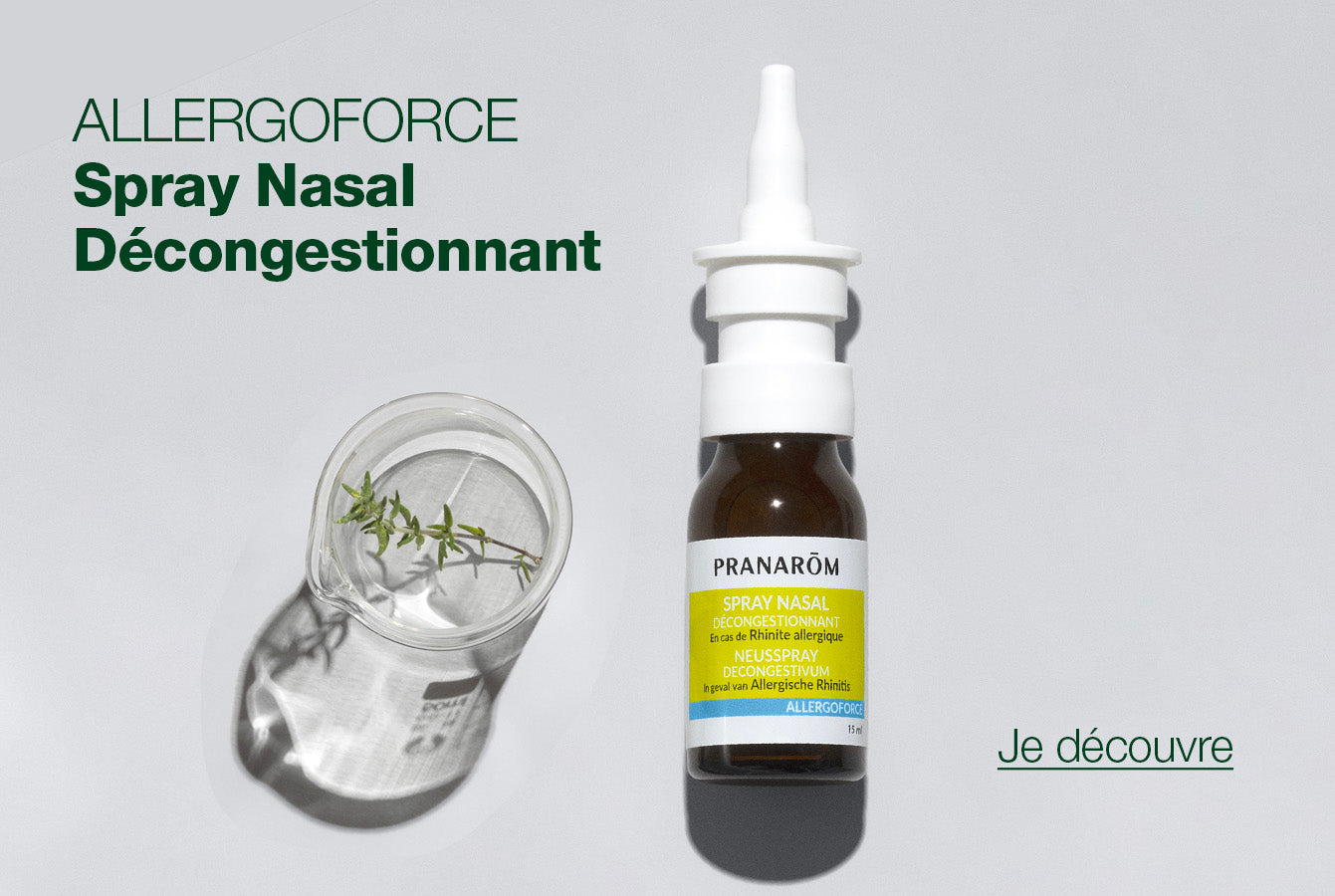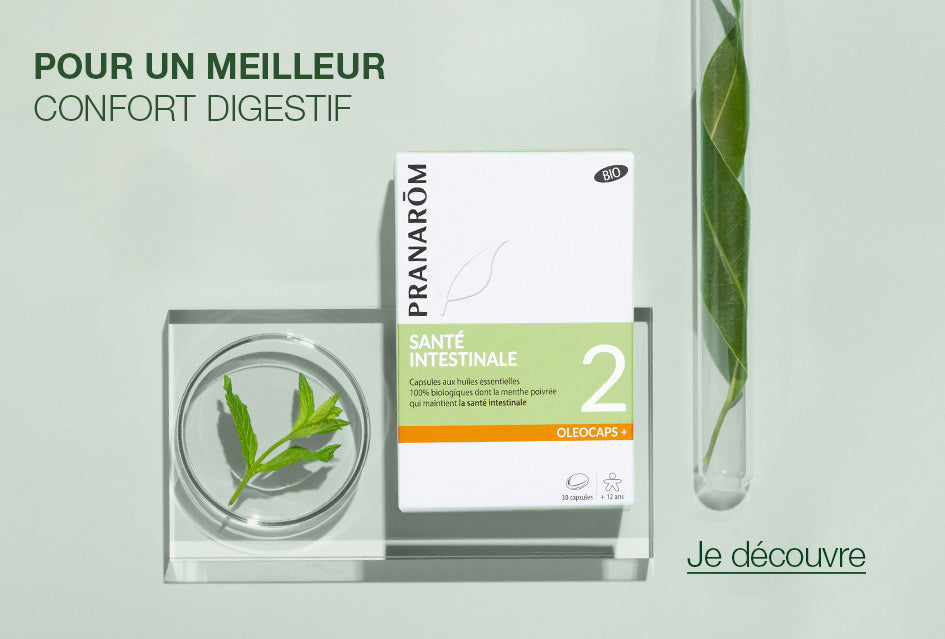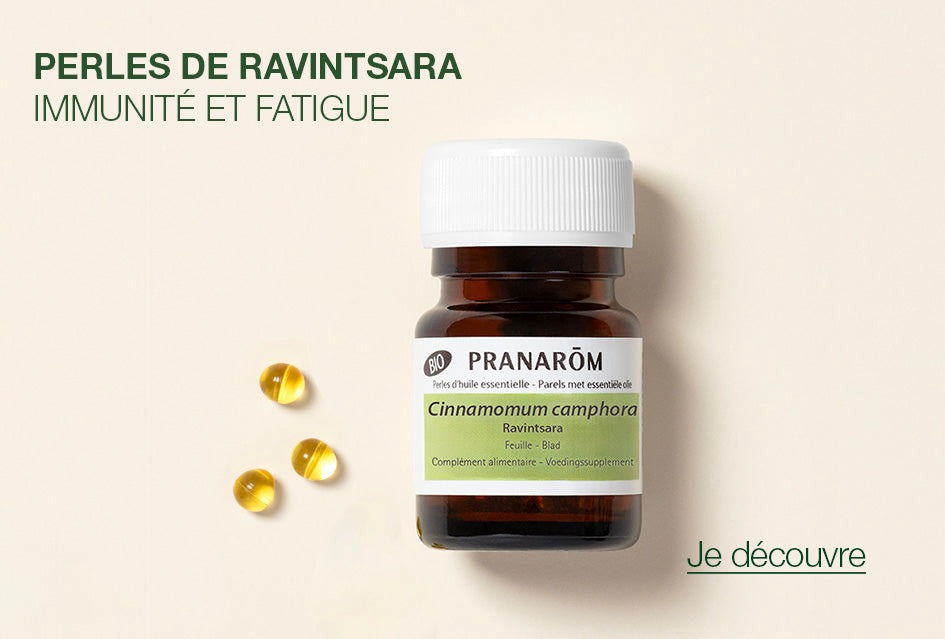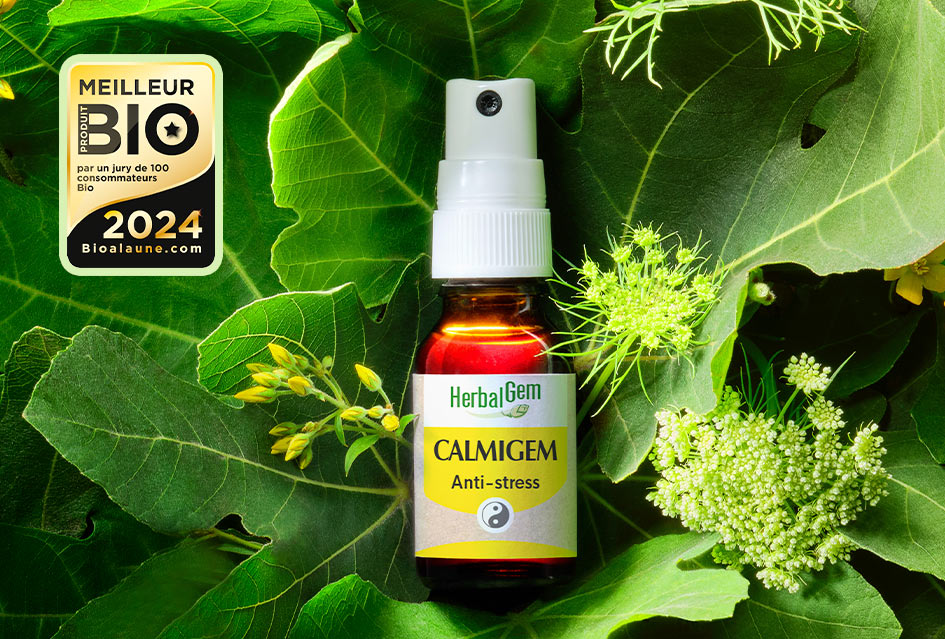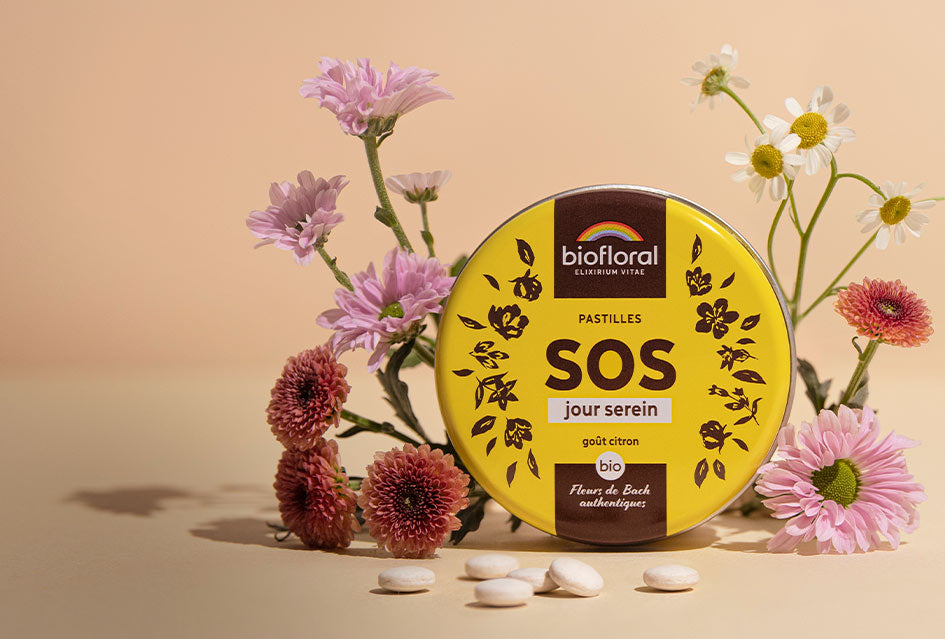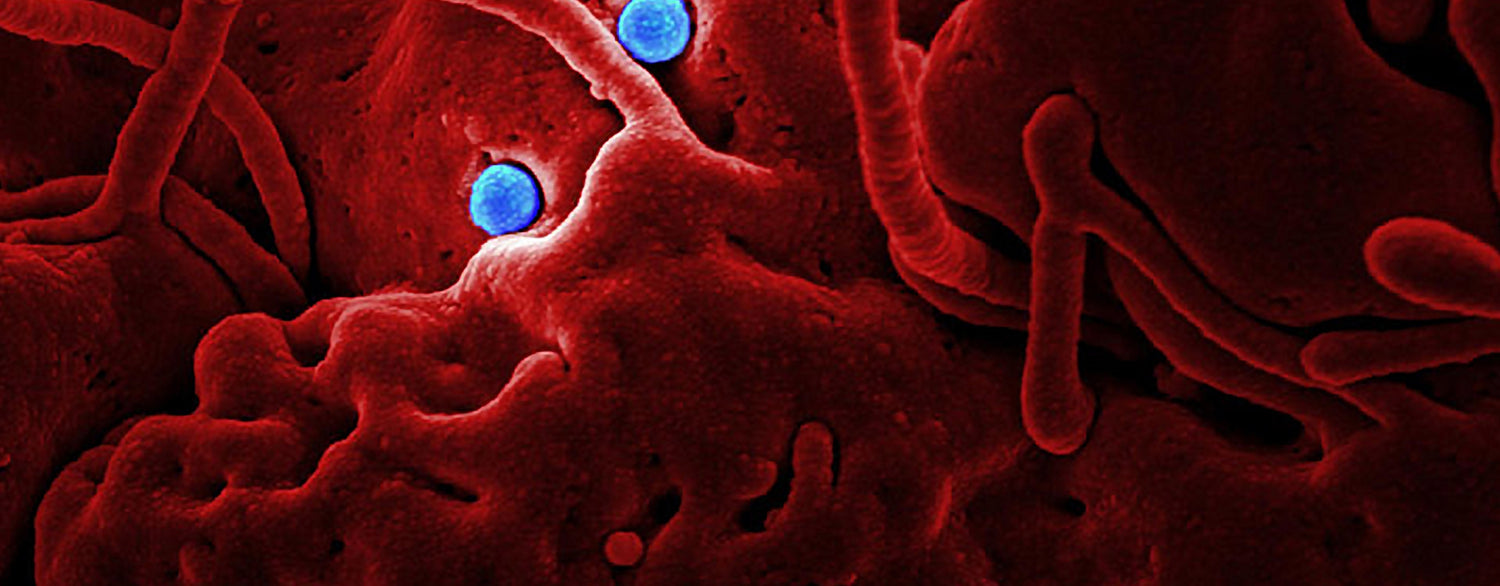Il existe beaucoup d’interpellations à propos de l’utilisation des Huiles Essentielles comme moyen antiviral, particulièrement face à l'épidémie de coronavirus. Dégageons le vrai du faux!
Les Huiles Essentielles tuent-elles le coronavirus ?
Faux
Non, les Huiles Essentielles ne soignent pas le coronavirus ! A ce jour, il n'existe aucune étude scientifique sur les huiles et leurs effets sur le COVID-19.
Les Huiles Essentielles protègent-elles et ont-elles une action contre des virus ?
Vrai
Il existe une multitude de travaux de recherche sur les propriétés antivirales des huiles essentielles. Les résultats sont impressionnants et incontestables. Voici notamment quelques virus pour lesquels nous disposons de véritables données :
- Le virus de syndrome respiratoire aigu sévère SRAS-CoV (c’est un coronavirus) ;
- Le virus de la grippe H1N1 ;
- Le virus de la grippe aviaire type H5N1 et sous-types H7N3 et H9N2 ;
- Le virus de bronchite anti-infectieuse (IBV) ;
- Le virus de l'herpès simplex HSV ;
- Le virus de la dengue DEN ;
- Le virus de la maladie de Newcastle NDV ;
- Le virus Junin (c’est un arénavirus, responsable de la fièvre hémorragique).
Exemples de l’action des Huiles Essentielles sur certains virus :
- L’HE de Tea tree inhibe la réplication de influenza A⁄PR ⁄ 8 virus subtype H1N1 à 0,0006% (v ⁄ v)1. Elle est active contre HSV-1 et HSV-2 à 0,0008% (v/v)2 ;
- L’HE d’Eucalyptus globulus est active contre HSV-1 et HSV-2 à 0,009% et 0,008% respectivement3 ;
- L’HE de Tea tree sur le Virus de la grippe aviaire H5N1 et sous-types H7N3 et H9N2 à une dose de 10 μl4 ;
- L’HE de Tea tree et de l’HE d’eucalyptus en aérosols en tant que désinfectant contre le virus de la grippe A et le phage M13 d' E. Coli. Les deux HE sont capables d'inactiver les virus à plus de 95% en 5 à 15 min d'exposition5
Existe-t-il des publications scientifiques sur l'efficacité des Huiles Essentielles face aux virus ?
Vrai
Liste de références sur l’activité antivirale des huiles essentielles de Tea tree, Eucalyptus, Niaouli et Ravintsara :
Bibliographie :
- Garozzo, A., Timpanaro, R., Bisignano, B., Furneri, P. M., Bisignano, G., and Castro, A. (2009). In vitro antiviral activity of Melaleuca alternifolia essential oil. Letters in applied microbiology, 49(6), 806-808.
- Reichling, J., Schnitzler, P., Suschke, U., and Saller, R. (2009). Essential oils of aromatic plants with antibacterial, antifungal, antiviral, and cytotoxic properties–an overview. Complementary Medicine Research, 16(2), 79-90.
- Schnitzler, P., Schon, K. and Reichling, J. (2001) Antiviral activity of Australian tea tree oil and eucalyptus oil against herpes simplex virus in cell culture. Pharmazie 56, 343–347.
- Mohammad, A., and Mehmood, D. In Vivo Anti-Viral Effect of Melaleuca alternifolia (Tea Tree Oil) and Olea europaea (Olive Leaf Extract) on Vero Cell Adapted Avian Influenza Virus. Human Journals. Research Article December 2018 Vol.:14, Issue:1 Citation: Mohammad Danish Mehmood et al. Ijppr.Human, 2018; Vol. 14 (1): 7-19.
- Usachev, E. V., Pyankov, O. V., Usacheva, O. V., and Agranovski, I. E. (2013). Antiviral activity of tea tree and eucalyptus oil aerosol and vapour. Journal of aerosol science, 59, 22-30.
- Ankita, S., Chandra, S. S., and Arti, T. (2013). Phytochemical study and antimicrobial activities of cinnamomum camphora. World Journal of Pharmaceutical research Volume 3, Issue 2, 2287-2294
- Astani, A., and Schnitzler, P. (2014). Antiviral activity of monoterpenes beta-pinene and limonene against herpes simplex virus in vitro. Iranian journal of microbiology, 6(3), 149.
- Astani, A., Reichling, J., and Schnitzler, P. (2010). Comparative study on the antiviral activity of selected monoterpenes derived from essential oils. Phytotherapy Research: An International Journal Devoted to Pharmacological and Toxicological Evaluation of Natural Product Derivatives, 24(5), 673-679.
- Bisignano, B. (2009). Attività antivirale e studio del meccanismo d'azione di estratti di melaleuca alternifolia nei vonfronti del virus dell'influenza A. Area 06 - Scienze mediche. http://hdl.handle.net/10761/1767
- Blanchard, J. M. (2007). Cinnamomum camphora à cinéole (ravintsara), une plante au service de la prévention des infections nosocomiales en milieu hospitalier?. Phytothérapie, 5(1), 15-20.
- Carson, C.F., Ashton, L., Dry, L., Smith, D.W. and Riley, T.V. (2001) Melaleuca alternifolia (tea tree) oil gel (6%) for the treatment of recurrent herpes labialis. J Antimicrob Chemother 48, 450–451.
- Carson, C.F., Smith, D.W., Lampacher, G.J. and Riley, T.V. (2008) Use of deception to achieve double-blinding in a clinical trial of Melaleuca alternifolia (tea tree) oil for the treatment of recurrent herpes labialis. Contemp Clin Trials 29, 9–12.
- Galan, D. M., Ezeudu, N. E., ..., and Malcolm, B. J. (2020). Eucalyptol (1, 8-cineole): an underutilized ally in respiratory disorders?. Journal of Essential Oil Research, 1-8.
- Garozzo, A., Timpanaro, R., Stivala, A., Bisignano, G., and Castro, A. (2011). Activity of Melaleuca alternifolia (tea tree) oil on Influenza virus A/PR/8: study on the mechanism of action. Antiviral research, 89(1), 83-88.
- Hamidpour, R., Hamidpour, S., Hamidpour, M., and Shahlari, M. (2014). Chemistry, Pharmacology and Medicinal Property of Camphor (Cinnamomum Camphora) Traditional Remedy with the History of Treating Several Diseases. Global Journal of Medical Research.
- Jean Michel Blanchard (2007). Cinnamomum camphora CT cineole (ravintsara), a plant to help prevent nosocomial infections in the hospital environment. International Journal of Clinical Aromatherapy Vol. 4 issue 1
- Li, X., Duan, S., Chu, C., Xu, J., Zeng, G., Lam, A. K. Y., ... and Gu, H. (2013). Melaleuca alternifolia concentrate inhibits in vitro entry of influenza virus into host cells. Molecules, 18(8), 9550-9566.
- Li, Y., Xu, Y. L., … and Xu, P. P. (2017). Intranasal co-administration of 1, 8-cineole with influenza vaccine provide cross-protection against influenza virus infection. Phytomedicine, 34, 127-135.
- Loizzo, M. R., Saab, A. M., Tundis, R., Statti, G. A., Menichini, F., Lampronti, I., ... and Doerr, H. W. (2008). Phytochemical analysis and in vitro antiviral activities of the essential oils of seven Lebanon species. Chemistry and biodiversity, 5(3), 461-470.
- Mansard, M., Laurain-Mattar, D., and Couic-Marinier, F. (2019). Huile essentielle de Ravintsara. Actualités Pharmaceutiques, 58(585), 57-59.
- Morales-Rico, C. L., … and González-Camejo, I. (2012). Composición química del aceite esencial de las partes aéreas de Melaleuca quinquenervia. Revista CENIC. Ciencias Químicas, 43, 1-2.
- Müller, J. et al. (2016). 1, 8-Cineole potentiates IRF3-mediated antiviral response in human stem cells and in an ex vivo model of rhinosinusitis. Clinical Science, 130(15), 1339-1352.
- Riley, T. V. (2005). Antiviral Activity of Tea Tree Oil–In Vitro and In Vivo. TV Riley - 2005 - academia.edu
- Siddique, S., et al. (2018). Chemical characterization, antioxidant and antimicrobial activities of essential oil from Melaleuca quinquenervia leaves. Indian Journal of Experimental Biology, 56, 686-693.
- Timpanaro, R., Garozzo, A., Bisignano, B., Stivala, A., Furneri, P. M., Tempera, G., and Castro, A. (2007). Inhibitory effect of Melaleuca alternifolia (tea tree oil) on influenza A/PR/8 virus replication. International Journal of Antimicrobial Agents, (29), S202-S203.
- Worth, H., ..and Dethlefsen, U. (2009). Concomitant therapy with Cineole (Eucalyptole) reduces exacerbations in COPD: a placebo-controlled double-blind trial. Respiratory research, 10(1), 69.
- Yang, Z., Wu, N., .. and Efferth, T. (2010). Anti-infectious bronchitis virus (IBV) activity of 1, 8-cineole: Effect on nucleocapsid (N) protein. Journal of Biomolecular Structure and Dynamics, 28(3), 323-330.
- Zamora, A. C. P. (2015). The Antiviral Properties of Melaleuca alternifolia concentrate (MAC) against West Nile virus (Doctoral dissertation, Griffith University).


